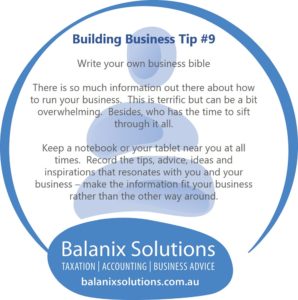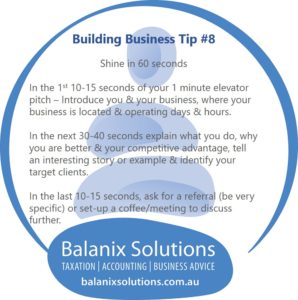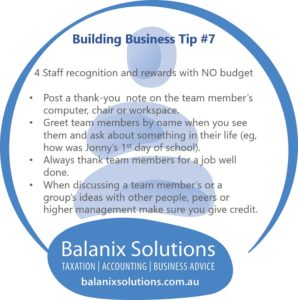Bookkeeper Albany Creek
Paid Family and Domestic Violence Leave from 1 February 2023
All employees (including part-time and casual employees) will be entitled to 10 days of paid family and domestic violence leave in a 12-month period. Under the National Employment Standards’ (NES) existing entitlement to 5 days of unpaid family and domestic violence leave will be replaced by this new entitlement.
Employees will be entitled to the full 10 days upfront, meaning they won’t have to accumulate it over time. However, the leave won’t accumulate from year to year if it isn’t used.
The new leave entitlement will be available from:
- 1 February 2023, for employees of non-small business employers (employers with 15 or more employees on 1 February 2023)
- 1 August 2023, for employees of small business employers (employers with less than 15 employees on 1 February 2023).
Until the new paid leave entitlements become available to them, employees can still access 5 days of unpaid family and domestic violence leave until the new paid leave entitlement becomes available to them.
When can an Employee take Paid Family and Domestic Violence Leave?
Employees (including part-time and casual employees) can take this paid leave if they need to do something to deal with the impact of family and domestic violence. This could include, for example, the employee:
- making arrangements for their safety, or the safety of a close relative (including relocation)
- attending court hearings
- accessing police services
- attending counselling
- attending appointments with medical, financial or legal professionals.
Under the new provisions, family and domestic violence means violent, threatening or other abusive behaviour by an employee’s close relative, a current or former intimate partner, or a member of their household that both:
- seeks to coerce or control the employee
- causes them harm or fear.
A close relative is:
- an employee’s
- spouse or former spouse
- de facto partner or former de facto partner
- child
- parent
- grandparent
- grandchild
- sibling
- a child, parent, grandparent, grandchild or sibling of an employee’s current or former spouse or de fact partner, or
- a person related to the employee according to Aboriginal or Torres Strait Islander kinship rules.
Is Notice and Evidence required to take this leave?
If an employee takes paid family and domestic violence leave, they have to let their employer know as soon as possible. This could be after the leave has started. An employer can ask their employee for evidence to show that the employee needs to do something to deal with family and domestic violence and it’s not practical to do that outside their hours of work.
An employer can only use this information to satisfy themselves that the employee is entitled to family and domestic violence leave, unless:
- the employee consents
- the employer is required to deal with the information by law, or
- it’s necessary to protect the life, health or safety of the employee or another person.
The employer can’t use the information for other purposes, including to take adverse action against the employee.
All other rules about notice and evidence are the same as the currents rules for taking unpaid family and domestic violence leave.
Find out more about the current rules at Notice and evidence for family and domestic violence leave.
To find out more about:
- How the leave renews
- Payment for leave
- Interaction with other paid leave
- Payslip requirements, as well as
- Examples illustrating requirements under Paid Family and Domestic Violence Leave
This blog provides general information only. It is advised you contact Balanix Solutions on 07 3264 4783 to discuss your specific situation.
Need to declare income from investments

More and more Australians are investing as a means of creating wealth. This has been made easier for first time investors with the advent of Exchange Traded Funds (EFT’s) and similar type products.
While it is great to see Australians creating wealth and therefore needing less reliance on government support through financial independence, most are not aware of the tax laws surrounding these investments.
This particularly applies to long term investors and who’s investments may be subject to tax obligations relating to capital gains when it comes time to sell or will receive income in the current year through dividends (shares), interest (bonds, term deposits, banks) or distributions (EFT, managed funds) on which the investor will need to declare as income in the tax year.
One way of increasing wealth is through reinvesting the income earned on current investments through a dividend/distribution reinvestment plan where you physically don’t receive a dividend/distribution in the form of cash but rather through more shares/EFT’s instead.
But what many first-time investors don’t realise is that whether the dividend/distribution is received in cash or more shares/EFT’s, it is deemed income for tax purposes in the years it is received.
Furthermore, if your investment has increased in value over a period of time and you decide to draw down some of the gain to take a holiday, pay school fees, do an extension on the house etc, it may be subject to capital gains tax which is the difference between what you paid for the shares for example and what you sell them for, allowing for costs associated with the buying and selling of the shares.
A simple example might be as follows:
Buy $5,000 in shares on 1 January 2020 and sell for $10,000 on 1 January 2022. You are liable for capital gains and have access to the 50% general deduction for tax purposes and your current tax rate is 30% on your income.
In this case you would have a capital gain of $5,000 (difference between purchase price $5,000 and selling price $10,000). As you are entitled to the 50% general deduction you would need to pay tax on $2,500 at your tax rate of 30% ($750).
Congratulations on building your own wealth through investments. It is suggested you work with your accountant or investment advisor to ensure you are maximising your returns.
The above comments are general in nature and should not be acted on without seeking professional advice. Should you have any questions or want specific advice relation to your tax position contact Balanix Solutions on 3264 47783.
Write Your Own Business Bible-Building Business Tip #9
Write your own business bible
There is so much information out there about how to run your business. This is terrific but can be a bit overwhelming. Besides, who has the time to sift through it all.
Keep a notebook or your tablet near you at all times. Record the tips, advice, ideas and inspirations that resonates with you and your business – make the information fit your business rather than the other way around.
Shine in 60 Seconds – Building Business Tip #8
Shine in 60 seconds
In the 1st 10-15 seconds of your 1 minute elevator pitch – Introduce you & your business, where your business is located & operating days & hours.
In the next 30-40 seconds explain what you do, why you are better & your competitive advantage, tell an interesting story or example & identify your target clients.
In the last 10-15 seconds, ask for a referral (be very specific) or set-up a coffee/meeting to discuss further.
Building Business Tip 7-4 Staff recognition and rewards with NO budget
4 Staff recognition and rewards with NO budget
- Post a thank-you note on the team member’s computer, chair or workspace.
- Greet team members by name when you see them and ask about something in their life (eg, how was Jonny’s 1st day of school).
- Always thank team members for a job well done.
- When discussing a team member’s or a group’s ideas with other people, peers or higher management make sure you give credit.




